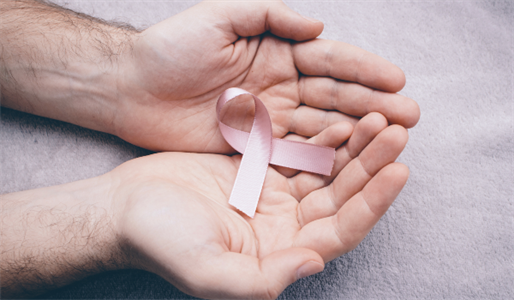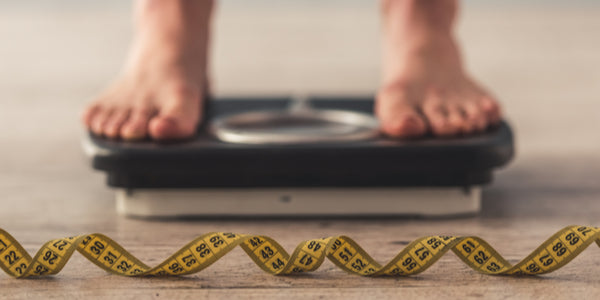
Male breast cancer is discussed much less than breast cancer in women. However, ignoring signs of male breast cancer can put a man in major danger.
In recent years, male breast cancer patients have had worse survival outcomes compared to female patients. This is largely due to a lack of awareness about symptoms or hesitancy to report concerning signs to a physician.
Luckily, men can prevent and protect themselves from breast cancer. Read on to learn more about male breast cancer, including signs to look for and protective measures.
How Can Men Get Breast Cancer?
One percent of all breast cancer cases happen in males, equating to about one in one thousand men receiving a diagnosis. And the number of men receiving a breast cancer diagnosis is increasing.
To put that in perspective, about 2,000 to 2,500 cases of male breast cancer are diagnosed annually in the United States. However, breast cancer is often stigmatized as a "woman's disease", leading many men to delay seeking treatment.
Fortunately, knowing the following facts about male breast cancer can be an important step in becoming aware of the risks.
Everyone Is Born with Breast Cells
All people, regardless of gender at birth, are born with some amount of breast tissue. Women grow up and become capable of producing milk. While men develop breasts for different functions, they also have breast tissue with similar fundamental components as women such as fat.
Regardless of the function, all breast tissue is capable of becoming cancerous. Thus, both men and women can develop breast cancer.
Fat Produces Excess Estrogen
Research has established an association between breast cancer and excessive weight gain. Too much fat tissue means higher levels of estrogen production. High levels of estrogen can cause breast cancer.
Doctors also know that breast cancer cells divide more rapidly than healthy cells do. This is one reason why early detection is absolutely essential. Cells that accumulate to form a tumor can travel and spread to nearby tissues and infiltrate other parts of the body.
Risk Factors
• Acquired or inherited gene mutations
• Aging
• Exposure to radiation
• Exposure to estrogen-related drugs (i.e. hormone therapy for prostate cancer)
• High levels of estrogen hormone, which is dominantly a female hormone
• Family history of breast cancer (especially related to the BRCA2 gene)
• Liver disease and heavy drinking
• Overweight and obesity
• Testicle conditions, disease, or surgery (Klinefelter's syndrome, orchitis, orchiectomy)
Signs Of Breast Cancer
In the year 2020, it was estimated that 2,620 new cases of breast cancer in men would be diagnosed and that about 520 men would pass away. Despite this fact, many men remain unaware of the warning signs which cause higher mortality (death rate) than in women. This is due primarily to a lack of awareness and delay in seeking treatment.
The majority of diagnoses occur in males in their 50s or 60s, but breast cancer can occur at any age. Similarly to women, men with breast cancer may notice a lump in the breast. Since routine mammograms are not part of the routine recommendations for men, contact a physician if there is anything unusual about the breasts, male or female. The earlier the cancer is detected, the better the chances for treatment or cure.
Common Symptoms of Breast Cancer
• Painless lump
• Thickening in breast tissue
• Changes to or irritation of the skin covering the breast (i.e. dimpling, puckering, redness, scaling)
• Changes to the nipple (i.e. redness, scaling, turning inward)
• Discharge from the nipple
• Swelling around the lymph nodes (i.e. under the arm, around the collar bone)
Best Ways To Prevent Breast Cancer
The best way to prevent obesity-related cancer is to manage the risk factors that can be controlled. In other words, maintain or return to a healthy weight and learn skills that encourage a healthy lifestyle and habits.
Check for Lumps
Men and women can find the presence of potentially abnormal lumps through conducting regular self-examination. Many men with breast cancer find their own lumps while in the shower, usually located underneath the nipple and areola.
(This image from the Centers for Disease Control and Prevention can be helpful in locating the anatomy). - include image and caption underneath
Men commonly delay reporting the lump to their doctors. But early detection of breast cancer increases the amount of treatment options and, in many cases, can be life-saving!
To avoid being diagnosed in the advanced stages of the disease, discuss any concerning symptoms or persistent signs with a physician.
Genetic Testing & Family History
Mutated or abnormal genes from parents can increase breast cancer risk as well as other cancers, such as prostate cancer. A genetic counselor can help identify defective genes, like BRCA1 or BRCA2, that can accurately predict breast cancer risk in men.
Disclose any strong family history of cancer with a physician. This helps increase awareness of risk factors and screening options for the future.
Maintain a Healthy Weight
Excess body weight is linked to a higher risk of cancer. So, it is important to keep weight within a healthy range to reduce breast cancer risk and optimal overall health.
Positive changes in lifestyle and diet can also significantly reduce insulin levels within weeks, which means a reduced disease risk. This is notable because high insulin levels are a risk factor for breast cancer recurring.
Avoid gaining excess weight by focusing on a balanced dietary intake and regular physical activity. Foods high in fiber and nutrients can help protect against some cancers.
Limit added sugars, sodium (salt), and solid fats. This includes foods such as sugar-sweetened beverages, highly processed snack foods, and desserts. These foods provide plenty of calories but are low in nutrient content. Moderate intake of red and processed meats and focus instead on plant foods offering protein, fiber, and many necessary nutrients.
It is also important to try and get nutrients from food before experimenting with supplements. Consume a variety of foods, such as the following:
Cruciferous & Dark, Leafy Vegetables:
• Spinach
• Broccoli
• Brussels sprouts
• Collards
• Kale
• Cauliflower
• Cabbage
Whole Fruits:
• Citrus
• Berries
• Pomegranate
• Cherries
Whole Grains:
• Oats
• Whole grain barley
• Bulgur
• Whole rye
• Whole grain breads and cereals
Legumes:
• Beans
• Peas
• Lentils
• Soybeans
Protein Sources:
• Seafood
• Poultry
• Lean meat
• Eggs
• Nuts and nut butters
Establish an Exercise Routine
At least 30 minutes of moderate to vigorous physical activity each day can go a long way in staying healthy and preventing the risk of cancer from rising.
Regular physical activity aids in maintaining a healthy weight, which helps to prevent the risks associated with becoming overweight or obese.
Moderate Alcohol Intake
Modifying alcohol intake is a major way to reduce the risk for cancer. Limit alcohol intake to no more than two servings per day for men. One drink/serving is any one of the following choices:
• 1.5 fluid ounces hard liquor
• 5 fluid ounces of wine
• 12 fluid ounces beer
Seek Professional Help
When in doubt, or if unsure how to cope with breast cancer risk, the good news is you are not alone. There are many qualified specialists that can help to navigate the process, from screening for disease risk to diagnosis and treatment.
Early detection, lifestyle modification, and awareness of the warning signs are key parts of protecting the body against male breast cancer. Do not let stigma stand in the way!
References:
American Cancer Society. Breast Cancer in Men. cancer.org. 2020. https://www.cancer.org/cancer/breast-cancer-in-men.html.
Ellis E. Reduce Risk During Cancer Control Month. Academy of Nutrition and Dietetics. 2020. https://www.eatright.org/health/diseases-and-conditions/cancer/reduce-risk-during-cancer-control-month.
Howland J. Breast Cancer: Not just a woman's disease. Mayo Clinic News Network. 2020. https://newsnetwork.mayoclinic.org/discussion/breast-cancer-not-just-a-womans-disease-2/.
Howland J. Mayo Clinic Minute: Breast cancer is a risk for men. Mayo Clinic News Network. 2019. https://newsnetwork.mayoclinic.org/discussion/mayo-clinic-minute-breast-cancer-is-a-risk-for-men/.
Klemm S. Reduce Breast Cancer Risk. Academy of Nutrition and Dietetics. 2020. https://www.eatright.org/health/diseases-and-conditions/cancer/reduce-breast-cancer-risk.
Klemm S. 7 Cancer Prevention Tips for Your Diet. Academy of Nutrition and Dietetics. 2020. https://www.eatright.org/health/diseases-and-conditions/cancer/7-cancer-prevention-tips-for-your-diet.
Liu N, Johnson KJ, Ma CX. Male Breast Cancer: An Updated Surveillance, Epidemiology, and End Results Data Analysis. Clinical Breast Cancer. 2018:18(5);e997-e1002. https://doi.org/10.1016/j.clbc.2018.06.013.
Mayo Clinic Staff. Male Breast Cancer. Mayo Clinic. 2020. https://www.mayoclinic.org/diseases-conditions/male-breast-cancer/symptoms-causes/syc-20374740.
National Breast Cancer Foundation. Male Breast Cancer. National Breast Cancer Foundation, Inc. 2020. https://www.nationalbreastcancer.org/male-breast-cancer.
Zehr KR. Diagnosis and Treatment of Breast Cancer in Men. American Society of Radiologic Technologists. 2019:91(1);51M-61M. http://www.radiologictechnology.org/content/91/1/51M.short.





